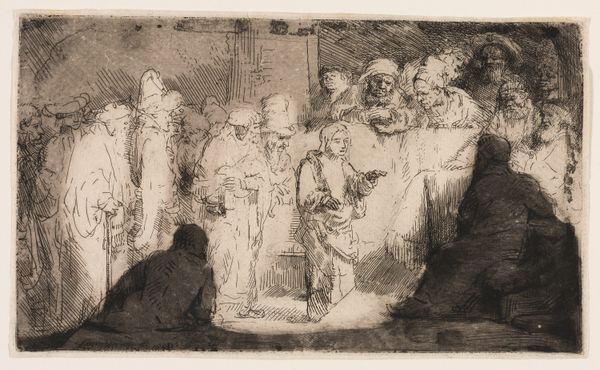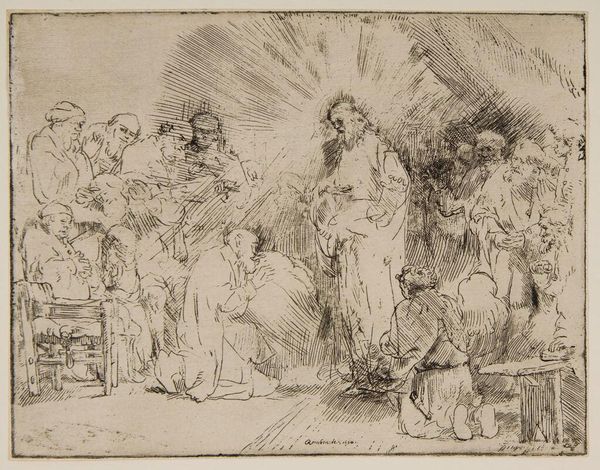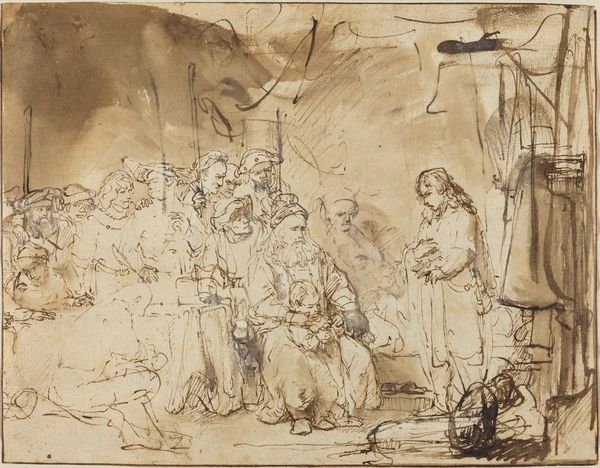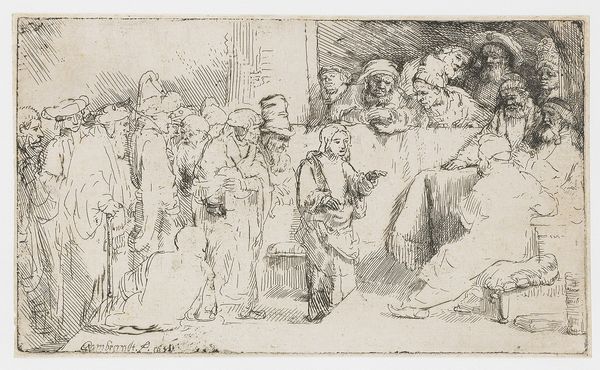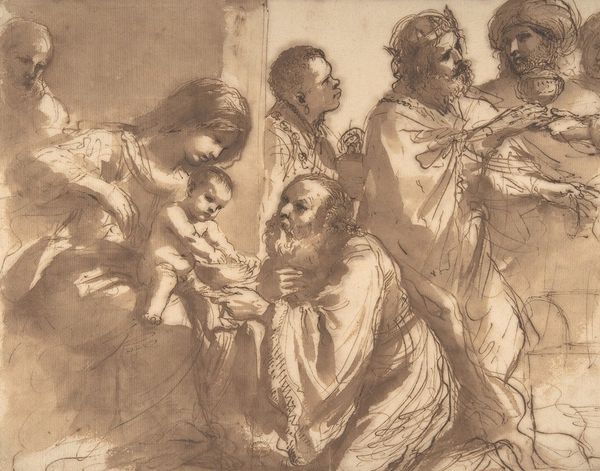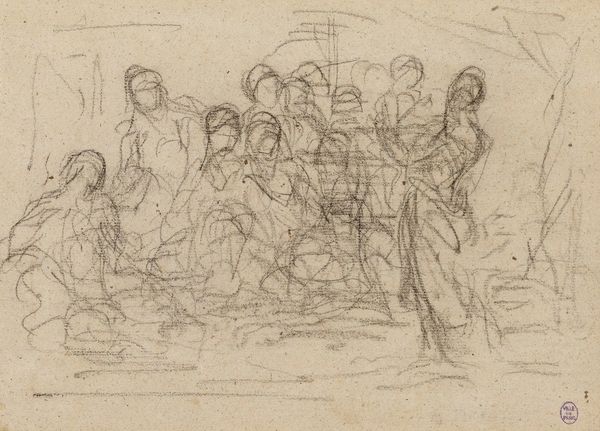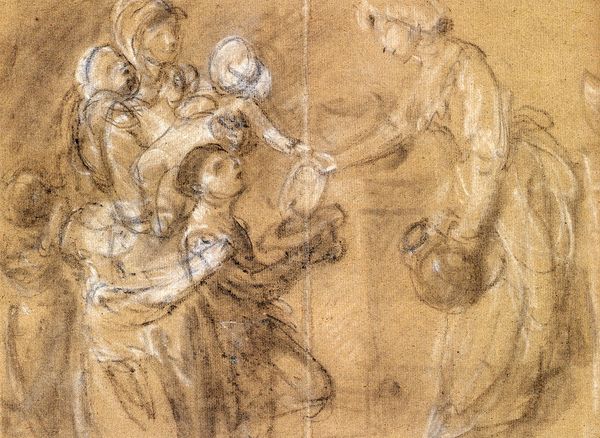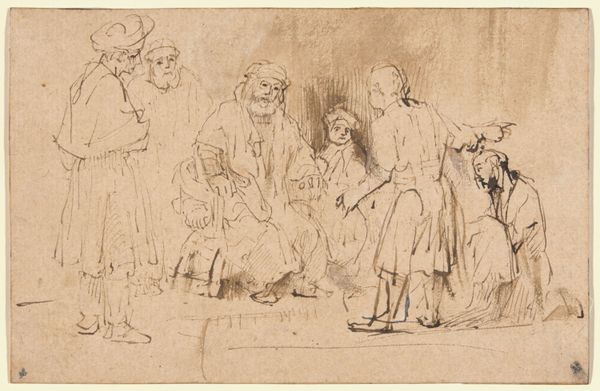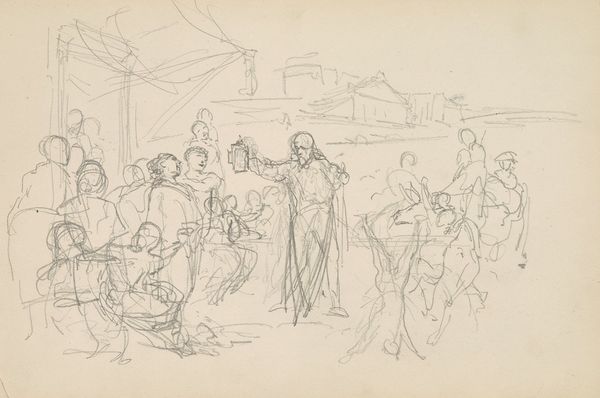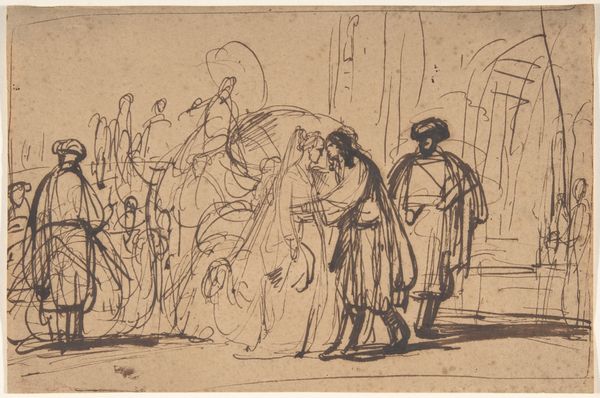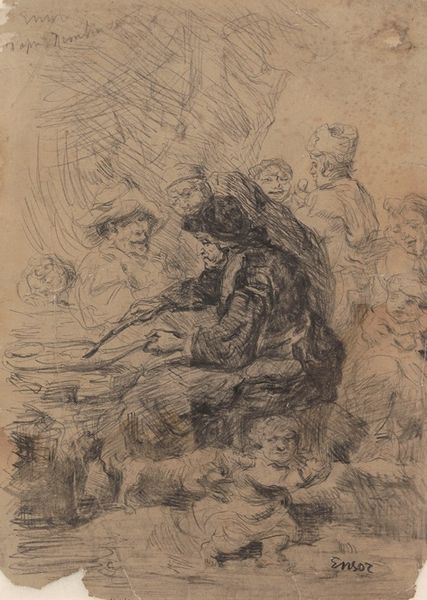
drawing, print, etching
#
drawing
#
narrative-art
#
baroque
# print
#
etching
#
figuration
#
history-painting
Copyright: Public Domain: Artvee
Rembrandt van Rijn created this etching, “Christ Appearing to the Apostles,” which captures a biblical scene through a distinct 17th-century Dutch lens. The image teems with the artist’s characteristically dramatic use of light and shadow, a style deeply rooted in the theatricality of the Baroque period. Note how Rembrandt renders Christ not as an ethereal figure but as a tangible, almost domestic presence among his followers. This was a period marked by the rise of a merchant class and a shift in patronage away from the church and toward private individuals. Rembrandt, like many artists of his time, catered to this new market, and his work often reflects a more personal and intimate approach to religious subjects. To fully appreciate Rembrandt's vision, one might delve into period sermons, pamphlets, and guild records. Such resources would offer insights into the cultural and economic forces shaping both his art and the society around him. Ultimately, the meaning of art is inextricably linked to its social and institutional context.
Comments
No comments
Be the first to comment and join the conversation on the ultimate creative platform.

